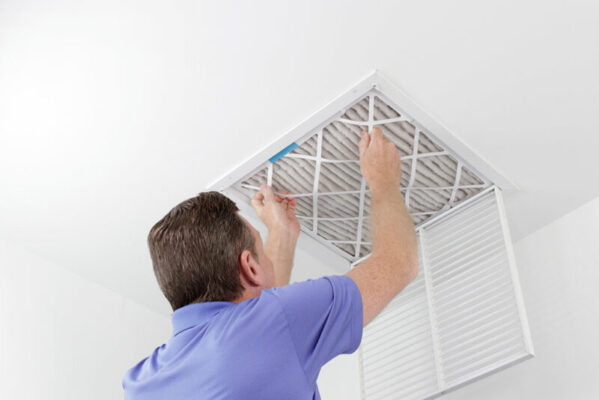Along with fire, earth, and water, the air’s one of the natural elements identified by ancient Greeks and connected with zodiac signs. While Aquarius, Gemini, and Libra are considered air signs, air’s significance extends beyond its connection to horoscopes. Air’s an essential natural element, and without clean air, most life on earth would cease to exist.
Today, the earth’s air quality is threatened by pollution and forest fires. Many companies use modern technology to create devices that clean the air by extracting harmful toxins and allergens. Let’s explore some of the new technology enabling people to breathe clean air.
HVAC systems have a significant impact on indoor air quality.
The primary purpose of a heating, ventilation and air conditioning (HVAC) system involves altering your home’s temperature. HVAC systems do this by drawing air in through return vents and along the ducts until the air reaches the HVAC unit. Next, the air passes through an air filter, removing harmful particulate matter from the air.
During the winter, air enters the heat exchanger, where it’s warmed. The heat’s generated by the furnace, which burns fuel to produce heat. During the summer, air passes over your air conditioner’s evaporator coil, which contains refrigerant. The refrigerant extracts heat from the air, which makes it cooler. AC units also extract moisture from the air.
Once the air temperature’s altered to the desired temperature set on the thermostat, the HVAC system pushes the modified air through ducts and out supply vents. Ideally, you’ll enjoy breathing clean air that’s an appropriate temperature to ensure your family’s comfort. Still, air can pick up contaminants along the way that compromise indoor air quality.
Mold can grow on your condenser coils, evaporator coil, or drain pan. When this happens, air can pick up mold spores when traveling through your air conditioner. Inhaling mold spores can trigger health issues, such as sneezing, itchy eyes, and trouble breathing. HVAC systems are standard in most modern buildings, including retail outlets, hospitals, homes, and offices. This means you could face health risks from breathing indoor air in any of these structures.
It’s possible to improve the quality of indoor air by installing a ducted air purifier. Thanks to new clean air technology, people can use air purifiers that target gases and contaminants, such as dust, pollen, and pet dander, to improve their building’s air quality. They also trap viruses and bacteria. Air purifiers have disposable filters that trap contaminants. They also have high-efficiency particulate air (HEPA) filters. These filters gather pollutants that are 0.3 microns or more, enabling them to extract over 99 percent of toxins such as mold, bacteria, and pollen. Finally, they use ultraviolet (UV) lamps to sanitize the air.
Portable air filters help cleanse the air.
While ducted air purifiers are excellent options for large buildings, you may live in an apartment where someone else maintains the HVAC unit. When it isn’t an option to modify your home’s HVAC system, you can opt for portable air filters designed to remove harmful toxins from the air. Portable air filters are small and quiet, enabling you to run them indoors without disrupting your sleep.
Whether you have asthma or want to maintain your home’s health, investing in a portable HEPA air purifier is a great option. Portable HEPA air purifiers have filters that can last for up to 180 days, which means you only have to change the filter twice a year. They have a pre-filter that extracts larger pollutants from the air first. The air also passes through the HEPA filter, which traps microscopic toxins from the air. These air purifiers also have a carbon filter that removes gases and odors from the air.
Modern technology makes it possible to improve indoor air quality in large and small spaces. Whether you’re focused on extracting bacteria and viruses from a hospital’s air supply or improving air quality in your apartment, you can use air purifiers to remove harmful pollutants and kill airborne toxins.
Read Dive is a leading technology blog focusing on different domains like Blockchain, AI, Chatbot, Fintech, Health Tech, Software Development and Testing. For guest blogging, please feel free to contact at readdive@gmail.com.





